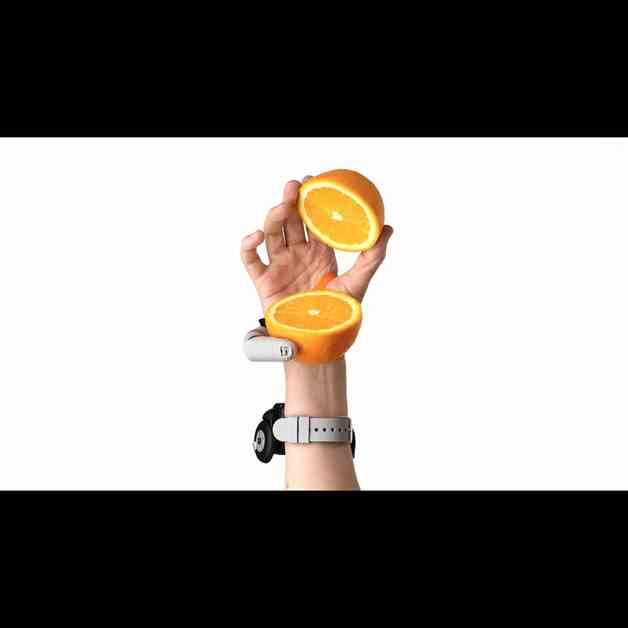Getting to grips with an extra thumb
In 2022, the team had the opportunity to test the Third Thumb at the annual Royal Society Summer Science Exhibition, where members of the public of all ages were able to use the device during different tasks. The results are published today in Science Robotics.
Over the course of five days, the team tested 596 participants, ranging in age from three to 96 years old and from a wide range of demographic backgrounds. Of these, only four were unable to use the Third Thumb, either because it did not fit their hand securely, or because they were unable to control it with their feet (the pressure sensors developed specifically for the exhibition were not suitable for very lightweight children).
Participants were given up to a minute to familiarise themselves with the device, during which time the team explained how to perform one of two tasks. The first task involved picking up pegs from a pegboard one at a time with just the Third Thumb and placing them in a basket. Participants were asked to move as many pegs as possible in 60 seconds. 333 participants completed this task.
The second task involved using the Third Thumb together with the wearer’s biological hand to manipulate and move five or six different foam objects. The objects were of various shapes that required different manipulations to be used, increasing the dexterity of the task. Again, participants were asked to move as many objects as they could into the basket within a maximum of 60 seconds. 246 participants completed this task.
Almost everyone was able to use the device straightaway. 98% of participants were able to successfully manipulate objects using the Third Thumb during the first minute of use, with only 13 participants unable to perform the task. Ability levels between participants were varied, but there were no differences in performance between genders, nor did handedness change performance – despite the Thumb always being worn on the right hand. There was no definitive evidence that people who might be considered ‘good with their hands’ – for example, they were learning to play a musical instrument, or their jobs involved manual dexterity – were any better at the tasks.
Older and younger adults had a similar level of ability when using the new technology, though further investigation just within the older adults age bracket revealed a decline in performance with increasing age. The researchers say this effect could be due to the general degradation in sensorimotor and cognitive abilities that are associated with ageing and may also reflect a generational relationship to technology. Performance was generally poorer among younger children. Six out of the 13 participants that could not complete the task were below the age of 10 years old, and of those that did complete the task, the youngest children tended to perform worse compared to older children. But even older children (aged 12-16 years) struggled more than young adults.
Dani Clode said: “Augmentation is about designing a new relationship with technology—creating something that extends beyond being merely a tool to becoming an extension of the body itself. Given the diversity of bodies, it’s crucial that the design stage of wearable technology is as inclusive as possible. It’s equally important that these devices are accessible and functional for a wide range of users. Additionally, they should be easy for people to learn and use quickly.”
Co-author Lucy Dowdall, also from the MRC Cognition and Brain Science Unit, added: “If motor augmentation – and even broader human-machine interactions – are to be successful, they’ll need to integrate seamlessly with the user’s motor and cognitive abilities. We’ll need to factor in different ages, genders, weight, lifestyles, disabilities – as well as people’s cultural, financial backgrounds, and even likes or dislikes of technology. Physical testing of large and diverse groups of individuals is essential to achieve this goal.”


